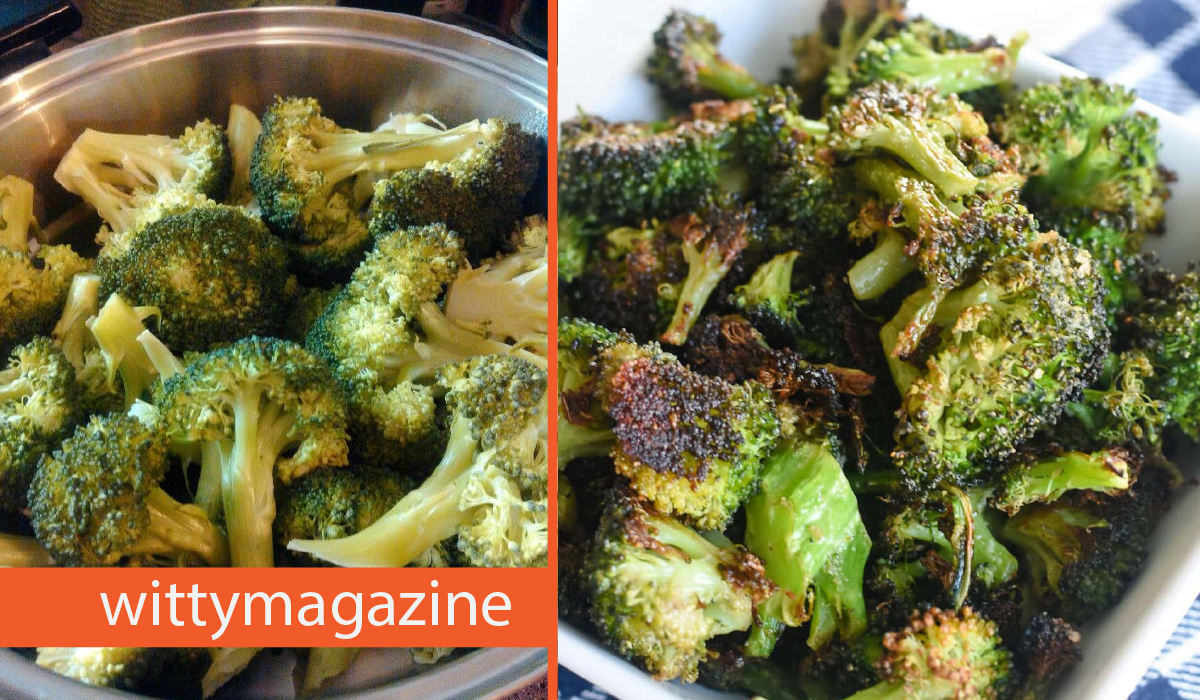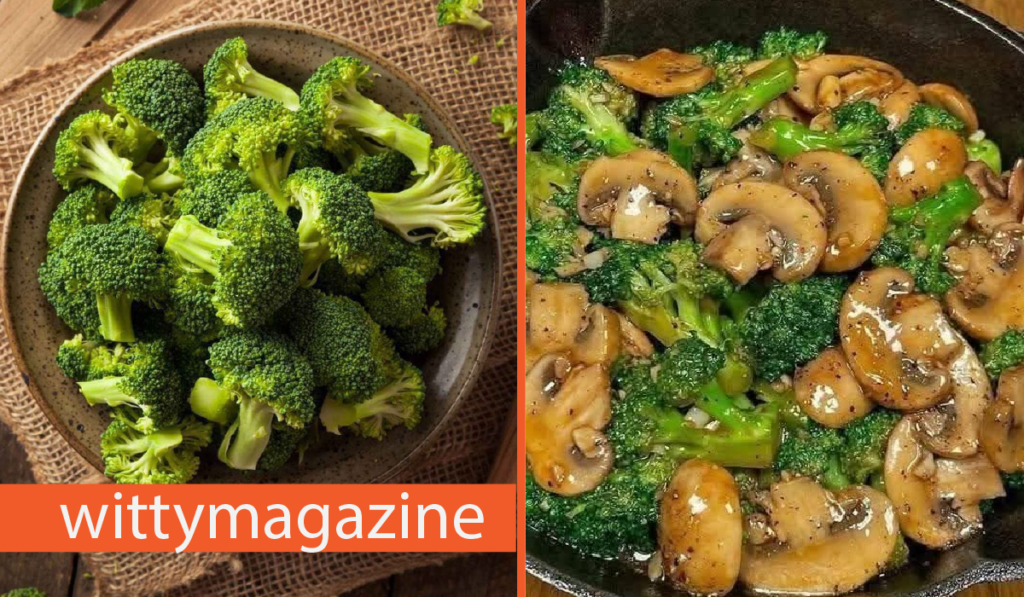Crocolini is the newest super vegetable taking kitchens by storm. With its tender stems, sweet flavor, and powerhouse nutrition, this broccoli-kale hybrid is quickly becoming a favorite among chefs, nutritionists, and home cooks. In this guide, discover why Crocolini is more than just a trendy green — it’s a delicious, easy-to-cook ingredient that can elevate your meals and boost your health.
What Is Crocolini?
Crocolini is a vibrant, tender-stemmed green vegetable rapidly gaining recognition as a “super vegetable” in kitchens and markets across the United States. Belonging to the nutrient-rich Brassica family—home to health heroes like broccoli, kale, cabbage, and cauliflower—Crocolini is a naturally bred hybrid between broccoli and kale.
Its botanical lineage gives it a unique combination of taste, texture, and nutrition that sets it apart from more familiar greens. Crocolini features elegant, slender stems with smaller, tightly packed florets, all in a bright, eye-catching green.

The vegetable’s flavor is distinct yet delicate—mild, slightly sweet, and with subtle nutty undertones, making it far more approachable than traditional broccoli. Importantly, Crocolini is not genetically modified. It is the result of natural plant breeding focused on improving taste, texture, and overall culinary appeal. With no need for trimming or peeling, Crocolini is not only beautiful but also incredibly practical for modern cooking.
Crocolini vs Broccoli vs Broccolini
While Crocolini shares similarities with broccoli and broccolini, it boasts its own unique characteristics that deserve attention. Visually, Crocolini’s stems are longer and more slender than those of broccoli, and its florets are smaller and more delicate. Broccolini, another hybrid (from broccoli and Chinese broccoli), also features long stems but retains a slightly bitter edge, whereas Crocolini is noticeably milder and more pleasant in flavor.
Texture-wise, Crocolini cooks more quickly and maintains a crisp-tender bite, even when sautéed or roasted, unlike broccoli which can become mushy if overcooked. Nutritionally, all three vegetables offer strong health benefits, but Crocolini takes a slight lead due to its kale heritage, contributing to a higher antioxidant count.
A comparison table showing differences in flavor, texture, nutritional density, and cooking versatility would reveal Crocolini as the most balanced and user-friendly of the trio. Whether you’re prepping a quick dinner or plating a gourmet meal, Crocolini outshines with elegance and ease.
Nutritional Profile of Crocolini
Crocolini is a powerhouse of nutrients despite its low calorie count, making it a favorite among health-conscious eaters. In just one serving, Crocolini delivers an impressive dose of key vitamins and minerals. It’s rich in vitamin C, which supports immune health and collagen production; vitamin K, essential for blood clotting and bone strength; and vitamin A, known for supporting vision and skin health. Crocolini also contains substantial amounts of calcium, iron, and potassium—nutrients that aid in bone density, oxygen transportation, and heart function.
Fiber is another highlight, helping support digestive health and satiety, making Crocolini a natural choice for those managing weight. But beyond basic vitamins and minerals, Crocolini also includes potent antioxidants like sulforaphane and lutein, which help combat inflammation and oxidative stress. It’s the ideal vegetable for those looking to pack more nutrition into every bite without sacrificing flavor or enjoyment.
Health Benefits of Crocolini
Boosts Immunity
Crocolini plays a vital role in strengthening the immune system due to its high vitamin C content. This essential nutrient aids in the production of white blood cells, which are critical in defending the body against infections. Additionally, antioxidants like sulforaphane present in Crocolini help neutralize harmful free radicals that can impair immune function.
Supports Bone Health
Loaded with vitamin K and calcium, Crocolini supports the development and maintenance of strong bones. Vitamin K helps regulate calcium in the bones and bloodstream, reducing the risk of fractures and osteoporosis, especially as we age.
Improves Digestive Health
Crocolini is rich in dietary fiber, which helps regulate bowel movements, prevent constipation, and support a healthy gut microbiome. A healthy digestive system is crucial not only for nutrient absorption but also for immune function and overall well-being.
Anti-Inflammatory Properties
Thanks to compounds like sulforaphane and glucosinolates, Crocolini possesses anti-inflammatory and detoxifying properties. These antioxidants help the body fight inflammation and may lower the risk of chronic diseases such as cancer, diabetes, and arthritis.
Heart Health and Cholesterol Control
Crocolini is an excellent heart-healthy food choice. It contains potassium, which helps regulate blood pressure, and fiber, which can reduce LDL cholesterol levels. Studies suggest that cruciferous vegetables like Crocolini contribute to better heart health through improved vascular function and reduced arterial stiffness.
Weight Management and Metabolism
Crocolini is low in calories yet rich in fiber, making it ideal for anyone looking to manage their weight. It provides a satisfying bite that keeps hunger at bay while fueling the body with essential nutrients. Its low-carb content also makes it suitable for ketogenic and low-glycemic diets.
Culinary Uses of Crocolini
Crocolini’s versatility in the kitchen is one of its biggest assets. Its tender stems and delicate florets cook quickly and absorb flavors beautifully, making it suitable for various cooking methods. Whether you choose to steam, roast, sauté, or grill, Crocolini holds its shape and flavor impressively well. For a simple and delicious preparation, sauté Crocolini in olive oil with garlic for 4–5 minutes and finish with a squeeze of lemon juice.

Roasting it with olive oil, sea salt, and pepper at 425°F for about 10 minutes brings out a caramelized sweetness. For a quick, nutrient-preserving option, steam for 3–4 minutes and drizzle with vinaigrette. Crocolini also performs well on the grill—brush it with oil and grill for a few minutes on each side for a smoky flavor. Its adaptability allows it to be used in everything from stir-fries and pastas to salads and grain bowls.
Quick Recipe Ideas
- Roasted Crocolini with Garlic and Parmesan
- Stir-Fried Crocolini with Ginger Soy Glaze
- Lemon Butter Crocolini Pasta
- Grilled Crocolini with Chili Flakes
How to Store and Preserve Crocolini
Proper storage of Crocolini ensures that it maintains its flavor, texture, and nutrient content. When purchasing, look for stalks that are firm with vibrant green florets and no yellowing. At home, wrap the Crocolini in a damp paper towel and store it in a perforated plastic bag in the crisper drawer of your refrigerator.
This method keeps it fresh for up to five days. For longer storage, consider blanching the stems in boiling water for two minutes, followed by an ice bath, and then freezing them in airtight containers. Blanching preserves color, texture, and nutritional value, making it easier to have Crocolini on hand for future meals.
More From Info: URLWO: The Ultimate Power Tool For Smarter Web Optimization In 2025
Where to Buy Crocolini
Crocolini is becoming increasingly accessible as its popularity spreads. It can be found in major grocery stores, health food markets, and local farmer’s markets throughout the U.S. Some online produce retailers also offer fresh Crocolini delivered to your door.
When shopping, prioritize freshness: firm stems, bright green color, and closed florets are good signs. Avoid limp or yellowing stalks, which indicate aging. Packaging may vary, from bundled bunches to pre-washed and trimmed packs, offering convenience to suit different lifestyles.
Is Crocolini Sustainable?
Sustainability is another area where Crocolini shines. Because it is fast-growing and requires fewer resources compared to some traditional crops, Crocolini is a more eco-friendly option. Many farms that cultivate Crocolini use sustainable agricultural practices like crop rotation, integrated pest management, and efficient irrigation.
Its high yield and minimal waste—since the entire vegetable is edible—make it even more attractive from an environmental standpoint. Choosing Crocolini not only supports your health but also contributes to a more sustainable food system.
Why Chefs and Foodies Love Crocolini
Crocolini has found a place in the hearts of chefs and foodies alike for its elegant presentation and culinary flexibility. The vibrant green color and delicate shape make it visually appealing on the plate, adding a gourmet touch to any dish. Its mild flavor profile allows it to complement a wide range of cuisines, from Mediterranean to Asian fusion.
In restaurant kitchens, Crocolini is valued for its quick cooking time and consistent texture. It’s often featured in upscale vegetable medleys, served alongside premium proteins, or used as a base for inventive vegetarian entrées. Its ability to shine in both simple and sophisticated recipes is what makes it a staple in the modern chef’s arsenal.
Crocolini in Modern Nutrition Trends
Crocolini fits perfectly into the growing trend of clean, plant-forward eating. It’s naturally gluten-free, vegan, low-carb, and keto-friendly—making it a go-to for people following a variety of dietary plans. Nutritionists frequently recommend Crocolini to clients who struggle to incorporate enough greens into their diets due to its mild flavor and ease of preparation.
It’s also categorized as a “functional food” due to its ability to contribute positively to health beyond basic nutrition. For fitness-focused individuals, meal preppers, or those recovering from illness, Crocolini is a gentle yet powerful choice. Its rise in popularity reflects a larger shift toward natural, nutrient-rich, and easy-to-use vegetables in everyday eating.
Potential Side Effects and Considerations
Although Crocolini is safe for most people, it’s important to consume it in moderation—especially for those with specific health conditions. As a cruciferous vegetable, Crocolini contains goitrogens, compounds that can interfere with thyroid function in individuals with iodine deficiency. Cooking reduces these compounds significantly, making it safe for regular consumption when balanced with other foods.
Additionally, due to its fiber content, some individuals may experience mild bloating or gas if introduced suddenly in large amounts. Gradually increasing intake and cooking Crocolini lightly can help alleviate these issues. Always wash Crocolini thoroughly to remove any potential pesticide residue or dirt before eating.
Conclusion
Crocolini is more than just a new green on the market—it’s a nutrient-dense, versatile, and sustainable vegetable that fits seamlessly into modern lifestyles. With its unique flavor, beautiful presentation, and exceptional health benefits, it has earned its status as a super vegetable.
Whether you’re cooking a quick weeknight meal or crafting a high-end culinary experience, Crocolini offers both practicality and elegance. Easy to prepare, enjoyable to eat, and packed with benefits, Crocolini is a simple addition that can make a big impact on your diet and well-being.
FAQs
1. What is Crocolini and how is it different from broccoli?
Crocolini is a hybrid vegetable derived from broccoli and kale, offering a milder, slightly sweet flavor and tender stems. Unlike traditional broccoli, which has thicker stalks and a more bitter taste, Crocolini cooks faster, has smaller florets, and is more versatile in various cuisines.
2. Can you eat Crocolini raw, or should it be cooked?
Yes, Crocolini can be eaten raw, especially in salads or wraps. However, lightly cooking it—by steaming, sautéing, or roasting—helps enhance its flavor while preserving nutrients, making it easier to digest for some individuals.
3. Is Crocolini suitable for special diets like keto, vegan, or gluten-free?
Absolutely. Crocolini is naturally low in carbohydrates, calories, and fat, making it ideal for keto and weight-loss diets. It’s also vegan and gluten-free, fitting perfectly into plant-based and allergen-sensitive meal plans.
4. Where can I buy fresh Crocolini in the U.S.?
You can find Crocolini at most major grocery chains, organic food stores, local farmer’s markets, and online produce retailers. Look for bright green stems with firm florets to ensure freshness.
5. What are the health benefits of eating Crocolini regularly?
Crocolini supports immune health, strengthens bones, improves digestion, and may reduce inflammation due to its rich vitamin, mineral, and antioxidant content. It’s also great for heart health and weight management when included as part of a balanced diet.


